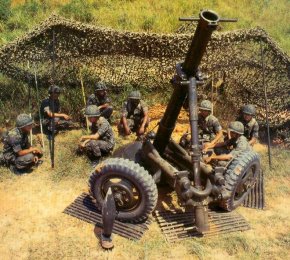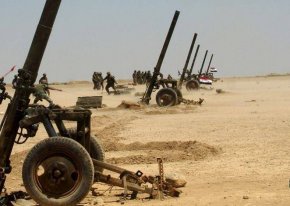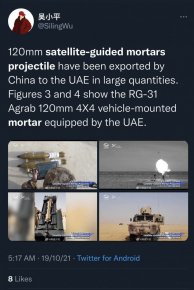Rocket5050
New Member
I recently saw a video where the 2S4 Tyulpan was being used in Ukraine and also saw one knocked out by the Ukrainian Army. This has led me to look at heavy mortars manufactured by Russia and Isreal. In particular, the M-160 made by Russia, and the M-66 made by Soltam in Isreal.
Both of the mortars are 160mm in caliber and they are towed. The M-160 from Russia is breech loaded while the M-66 is muzzle-loaded. You can also imagine both are extremely heavy. So heavy that I've seen both used in self-propelled mounts. Iraq mounted the M-160 to some old T-55s with the turrets removed and Isreal used the M-66 in old Shermans.
The M-160 has been used as late as the Syrian Civil War. For the most part, it appears most of the 160mm mortars are placed in reserve. It seems as if most countries use their 120mm mortars now as their heavy mortars. I can see why for the most part as the 160mm are heavy, slow to set up, and slow to reload compared to 120mm mortars.
If a defense contractor would offer a modernized towed 160mm mortar, do you think armies would be interested in it?

Both of the mortars are 160mm in caliber and they are towed. The M-160 from Russia is breech loaded while the M-66 is muzzle-loaded. You can also imagine both are extremely heavy. So heavy that I've seen both used in self-propelled mounts. Iraq mounted the M-160 to some old T-55s with the turrets removed and Isreal used the M-66 in old Shermans.
The M-160 has been used as late as the Syrian Civil War. For the most part, it appears most of the 160mm mortars are placed in reserve. It seems as if most countries use their 120mm mortars now as their heavy mortars. I can see why for the most part as the 160mm are heavy, slow to set up, and slow to reload compared to 120mm mortars.
If a defense contractor would offer a modernized towed 160mm mortar, do you think armies would be interested in it?



